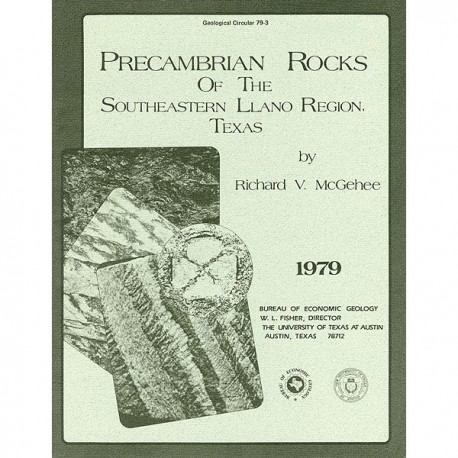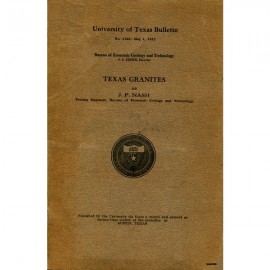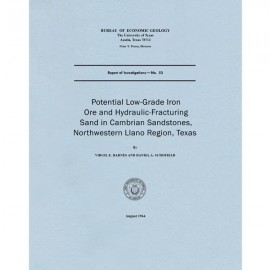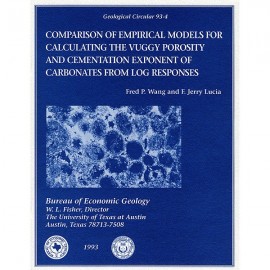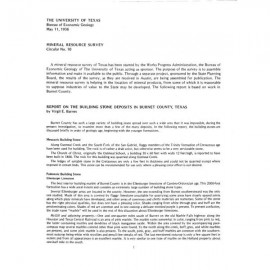Geological Circulars
-
Books & Reports
- Reports of Investigations
- Guidebooks
- Udden Series
- Geological Circulars
- Down To Earth
- Atlases of Major Oil and Gas Reservoirs
- Texas Memorial Museum Publications
- Environmental Geologic Atlas of the Texas Coastal Zone
- Mineral Resource Circulars
- Other Reports
- Seminars and Workshops
- Handbooks
- Submerged Lands of Texas
- Symposia
- Annual Reports
- Open File Reports
-
Maps & Cross Sections
- Thematic Maps
- Miscellaneous Maps, Charts & Sections
- Geologic Atlas of Texas
- STATEMAP Project Maps
- Geologic Quadrangle Maps
- Cross Sections
- Highway Geology Map
- Energy and Mineral Resource Maps
- Shoreline Change and Other Posters
- Wilcox Group, East Texas, Geological / Hydrological Folios
- Bouguer Gravity Atlas of Texas
- River Basin Regional Studies
- Featured Maps
- Posters
- Teachers & the Public
-
Geological Society Publications
- Gulf Coast Association of Geological Societies
- Alabama Geological Society
- Austin Geological Society
- Corpus Christi Geological Society
- Houston Geological Society
- Lafayette Geological Society
- Mississippi Geological Society
- New Orleans Geological Society
- South Texas Geological Society
- GCS SEPM Publications
- Historic BEG & UT Series
Precambrian Rocks of the Southeastern Llano Region, Texas
GC7903
A free, digital version of this publication can be found on: Texas ScholarWorks
GC7903. Precambrian Rocks of the Southeastern Llano Region, Texas, by R. V. McGehee. 36 p., 5 plates, 1979. ISSN: 0082-3309. Print.
To purchase this publication as a PDF download, please order GC7903D.
ABSTRACT
Precambrian sedimentary rocks and associated mafic and silicic igneous rocks in Central Texas underwent a single episode of regional metamorphism about 1,050 million years (m.y.) ago. In the final stages of metamorphism great masses of granite and innumerable small pegmatite bodies intruded the older sedimentary and igneous rocks. The Llano Supergroup, stratiform metamorphic rock more than 28,000 ft (8,400 m) thick, includes two groups: the Valley Spring Gneiss, consisting mostly of quartz-feldspar gneiss; and the overlying Packsaddle Schist, composed of marble, graphite schist, amphibole schist, mica schist, and leptite. Four new formations, Honey, Sandy, Rough Ridge, and Click (from oldest to youngest), are proposed as subdivisions of the Packsaddle Schist. Metamorphosed intrusive igneous rocks include Coal Creek Serpentine, Big Branch Gneiss, Red Mountain Gneiss, and many small bodies of metagabbro and metagranite.
Grade of most of the metamorphic rocks is almandine-amphibolite facies. Andalusite, sillimanite, and cordierite are widespread but not abundant in the politic rocks. Diopside and tremolite are common in marble and calc-silicate hornfels. Contact metamorphism near granite bodies probably approached the pyroxene-hornfels facies.
Major structural elements of the area are the broad regional southeast-plunging Babyhead - Indian Flat anticline and three northwest-trending thrust faults, which may have been caused by forceful batholithic intrusion. Foliation is generally parallel to original bedding and lineation is generally parallel to major fold axes. Some of the rocks also possess an axial plane foliation, and others have additional lineations (mostly at high angles to fold axes).
Keywords: Big Branch Gneiss, Central Texas, Coal Creek Serpentine, Llano region, Llano Supergroup, Packsaddle Schist, Precambrian, Red Mountain Gneiss, Texas
Citation
McGehee, R. V., 1979, Precambrian Rocks of the Southeastern Llano Region, Texas: The University of Texas at Austin, Bureau of Economic Geology, Geological Circular 79-3, 36 p.
